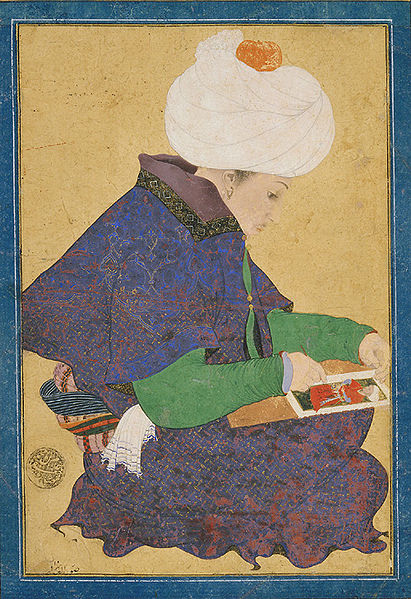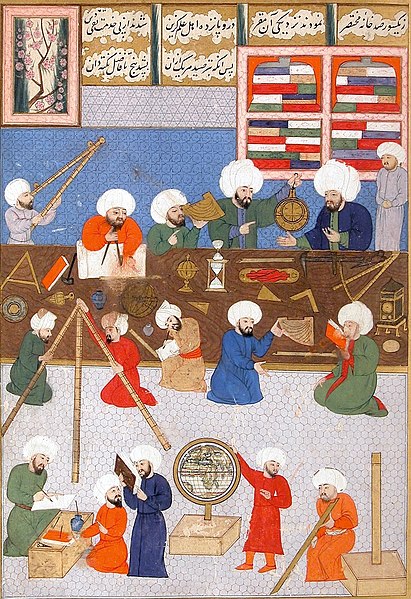Ottoman miniature is a style of illustration found in Ottoman manuscripts, often depicting portraits or historic events. Its unique style was developed from multiple cultural influences, such as the Persian Miniature art, as well as Byzantine and Mongol art. It was a part of the Ottoman book arts, together with illumination (tezhip), calligraphy (hat), marbling paper (ebru), and bookbinding (cilt). The words taswir or nakish were used to define the art of miniature painting in Ottoman Turkish.
Ottoman miniature painters
Portrait of a painter during the reign of Mehmed II
Topkapı Palace during the reign of Selim I
Ottoman astronomers at work around Taqī al-Dīn at the Istanbul Observatory
A Persian miniature is a small Persian painting on paper, whether a book illustration or a separate work of art intended to be kept in an album of such works called a muraqqa. The techniques are broadly comparable to the Western Medieval and Byzantine traditions of miniatures in illuminated manuscripts. Although there is an equally well-established Persian tradition of wall-painting, the survival rate and state of preservation of miniatures is better, and miniatures are much the best-known form of Persian painting in the West, and many of the most important examples are in Western, or Turkish, museums. Miniature painting became a significant genre in Persian art in the 13th century, receiving Chinese influence after the Mongol conquests, and the highest point in the tradition was reached in the 15th and 16th centuries. The tradition continued, under some Western influence, after this, and has many modern exponents. The Persian miniature was the dominant influence on other Islamic miniature traditions, principally the Ottoman miniature in Turkey, and the Mughal miniature in the Indian sub-continent.

Yusuf and Zulaikha (Joseph chased by Potiphar's wife), by Behzād, 1488
Camp scene from late in the classic period, with no frame (c. 1556-1565), Freer Gallery of Art, Washington, D.C.; Majnun (at top wearing orange) spies on his beloved Layla (standing in tent doorway).
Saki, album miniature by Reza Abbasi, 1609
Complex palace scene, 1539–1543, Mir Sayyid Ali








